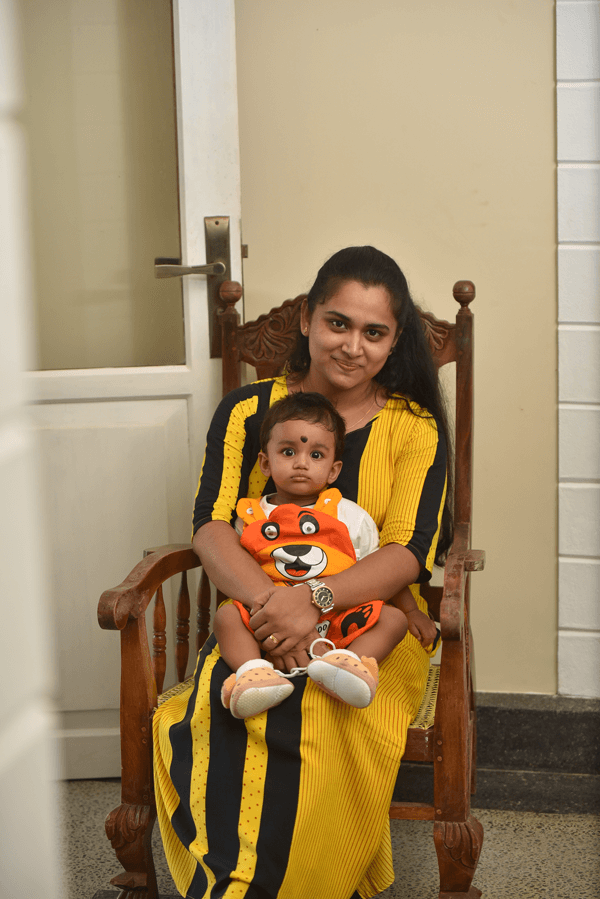Does this sound familiar? If you are a parent of a young kid, you certainly have some anxiety as your child approaches toddlerhood, particularly the period known as the ‘‘Terrible Twos’’. However, this dreadful terrible twos don’t have to be that bad. You may only need a few strategies for controlling tantrums, a sense of humor, a lot of patience, understanding and love. Here we’ll take a closer look at what the terrible twos are, why they happen, and how you can navigate this challenging time with your child.
What are this so-called Terrible Twos?
The term ‘‘Terrible twos’’ deserves a typical developmental stage in which a toddler can frequently alternate between dependency on adults and a newly emerging yearning for independence. It is a developmental phase that many young children go through between the ages of 18 months and 3 years. During this period, children often display difficult behavior such as tantrums, defiance, and aggression as they learn to assert their independence and navigate their world. This phase can be challenging for both the child and their caregivers, as it requires patience, understanding, and effective communication to manage the child's behavior and help them develop the necessary social and emotional skills to navigate their emotions and interactions with others.
What are the symptoms?
While every child is unique and may experience this stage differently, here are some common symptoms or behaviors that parents may notice during the terrible twos:
- Tantrums and meltdowns:
Children may become easily frustrated and overwhelmed, and may throw tantrums or meltdowns in response to minor triggers.
- Defiance:
Children at this age are starting to assert their independence, and may refuse to follow instructions or do things that they don't want to do.
- Hitting, biting, or pushing others:
Children may lash out physically when they don't get their way, or when they're feeling frustrated or overwhelmed.
- Whining and complaining:
Children may use whining or complaining as a way to express their displeasure or get attention.
- Being excessively clingy or independent:
Children at this age may vacillate between wanting constant attention and affection, and wanting to do things entirely on their own.
- Engaging in power struggles with parents or caregivers:
Children may test their boundaries and push back against rules and restrictions, leading to power struggles with parents or caregivers.
- Being impulsive:
Children may act on their impulses without considering the consequences, such as running into the street or grabbing things that aren't theirs.
- Mood swings:
Children at this age may experience dramatic mood swings, going from happy and playful to angry or upset in a matter of moments.
Why do the terrible twos happen?
During this time, children are becoming more mobile, verbal, and independent, and are exploring their world with newfound curiosity and enthusiasm. However, this new independence can also lead to frustration and conflict as children struggle to communicate their needs and desires effectively. Here are some of the reasons why the terrible twos happen:
- Developing independence:
Children at this age are becoming more independent and want to do things for themselves. This newfound independence can lead to conflicts when they encounter boundaries and rules.
- Cognitive development:
Children at this age are developing their cognitive abilities and are learning about cause-and-effect relationships. They may experiment with behaviors and test boundaries to better understand how the world works.
- Emotional development:
Children at this age are also beginning to develop a greater range of emotions, and may experience strong feelings of frustration, anger, or sadness. They may struggle to regulate these emotions, leading to tantrums and meltdowns.
- Language development:
As children develop their language skills, they are better able to express themselves and their desires, but may also become more frustrated when they are unable to communicate effectively.
- Physical changes:
Children at this age are going through physical changes such as teething, growth spurts, and acquiring new motor skills. These changes can lead to discomfort and frustration, which may contribute to challenging behavior.
- Major life changes:
Major life changes such as a move, a new sibling, or a change in daycare or preschool can also contribute to difficult behavior during the terrible twos. Children may experience heightened anxiety or stress during these transitions, which can manifest as challenging behavior.
- Lack of sleep:
Children who are not getting enough sleep may be more prone to challenging behavior. The physical and emotional demands of this developmental stage can make it difficult for children to settle down and get the rest they need.
- Overstimulation:
Children at this age are easily overstimulated by their environment. Loud noises, bright lights, and crowds can all contribute to challenging behavior.
- Nutrition:
Proper nutrition is important for a child's development. Poor nutrition, such as too much sugar or caffeine, can contribute to challenging behavior.
How to deal with terrible twos?
Dealing with the "terrible twos" can be a challenging time for parents and caregivers. Here are some tips to help you navigate this phase:
1. Set Clear Boundaries:
Establish clear, age-appropriate rules and expectations for your child, and communicate them in a calm and consistent manner. Let your child know what behaviors are acceptable and what behaviors are not, and be sure to enforce consequences when necessary.
2. Stay Calm:
When your child is having a tantrum or displaying challenging behavior, it can be easy to get frustrated or overwhelmed. However, it's important to stay calm and model emotional regulation for your child. Take deep breaths, speak in a soft and even tone, and use positive affirmations to help yourself stay centered.
3. Provide Choices:
Toddlers want to feel like they have some control over their world, so offer them choices when possible. For example, instead of saying "put on your shoes", ask "which shoes do you want to wear today?" This can help your child feel more empowered and less likely to engage in power struggles.
4. Give Positive Attention:
Children crave attention and will often engage in negative behavior to get it. To avoid reinforcing negative behavior, make sure to give plenty of positive attention to your child when they are behaving well. Praise them for good behavior, give them hugs and cuddles, and spend quality time with them.
5. Stay Consistent:
Consistency is key when it comes to managing challenging behavior in young children. Stick to your established rules and consequences, and don't make exceptions just because you're tired or in a rush. This will help your child learn that their behavior has predictable outcomes.
6. Use Redirection:
If your child is engaging in an undesirable behavior, redirect their attention to something else. For example, if they are throwing their toys, suggest they play with something else instead. This can help break the cycle of negative behavior and encourage positive choices.
7. Practice Empathy:
Toddlers are still learning to understand and manage their emotions, so it's important to practice empathy and help them develop their emotional intelligence. Validate their feelings, let them know you understand, and offer solutions for how they can manage their emotions in a positive way.
8. Provide Positive Feedback:
When your child does something well, provide specific, positive feedback. For example, instead of saying "good job", say "I'm so proud of you for sharing your toys with your friend". This helps your child understand what behaviors are desirable and reinforces positive choices.
9. Use Time-In:
When your child is engaging in challenging behavior, instead of using time-out, consider using a time-in. This involves sitting with your child and discussing their behavior, validating their feelings, and helping them find a positive solution to the problem.
10. Don't Overreact
Try not to overreact to your child's tantrums or negative behavior. Respond calmly and consistently.
11. Use Humor:
Sometimes a little humor can help diffuse a tense situation.
12. Take Breaks:
If you're feeling overwhelmed, take a break. Step outside for some fresh air or take a few minutes to yourself.
13. Offer Comfort:
Sometimes toddlers act out because they're upset or uncomfortable. Offer comfort and understanding.
14. Keep Them Active:
Toddlers have a lot of energy, and it's important to keep them active to avoid boredom and frustration.
15. Maintain a Routine:
A predictable routine can help your child feel secure and avoid meltdowns.
16. Use Positive Language:
Use positive language when communicating with your child. Instead of saying "don't hit," say "use gentle hands."
17. Allow for Independence:
Toddlers want to feel independent, so try to allow them to do things for themselves whenever possible.
18. Give Warnings:
Before transitioning to a new activity or leaving the house, give your child a warning. This can help avoid meltdowns.
19. Make Time for One-on-One:
It's important to make time for one-on-one activities with your child. This can help strengthen your bond and avoid negative behavior.
20. Seek Support:
If you're struggling to deal with your child's behavior, seek support from friends, family, or a professional.
21. Avoid Power Struggles:
It's important to avoid power struggles with your toddler. Instead of forcing them to do something, try to use positive reinforcement or distraction.
22. Take Care of Yourself:
Finally, don't forget to take care of yourself! Dealing with the "terrible twos" can be exhausting, so make sure you're taking time to rest, exercise, and engage in activities that bring you joy. When you're feeling balanced and centered, you'll be better equipped to handle challenging behavior in your child.
In conclusion, the "terrible twos" is a challenging phase in a child's development. But remember that this phase will pass, and your child will continue to grow and develop into a healthy, happy adult.







